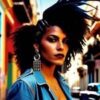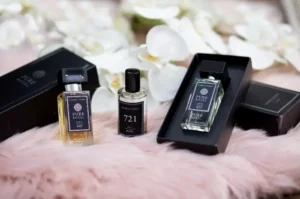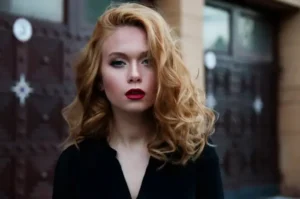In the dynamic world of beauty, creative makeup artistry stands as a testament to human imagination and skill.
This form of art transcends traditional makeup norms, blending colors, textures, and concepts to transform the human face and body into a canvas for extraordinary expressions.
This article delves into the multifaceted realm of creative makeup artistry, exploring its various aspects and the impact it has on both the artist and the viewer.
The Evolution of Makeup Artistry
Makeup artistry has evolved significantly over the years. From the ancient Egyptians using kohl to define their eyes to the geishas of Japan with their iconic white foundation and red lips, makeup has always been a form of expression.
In modern times, creative makeup artistry has emerged as a distinct field, pushing the boundaries of conventional beauty and delving into the realms of fantasy, expressionism, and avant-garde.
Tools of the Trade
Creative makeup artists use a variety of tools and products that go beyond traditional makeup. This includes body paints, prosthetics, airbrushing techniques, and unconventional materials like rhinestones, feathers, and even LED lights.
The choice of tools and materials often depends on the concept and the desired effect, allowing for limitless creativity.
Inspirations and Influences
Creative makeup artists draw inspiration from a plethora of sources. This can range from natural elements like flora and fauna to abstract concepts like emotions and dreams.
Artistic movements such as surrealism, impressionism, and futurism also play a significant role in shaping the visions of these artists. Pop culture, fashion trends, and even political and social issues can influence the themes and styles of creative makeup.
Techniques and Skills
The techniques employed in creative makeup artistry are as varied as the artists themselves. Some common methods include contouring to create illusions of depth and shape, blending vibrant colors for a seamless transition, and layering textures for a three-dimensional effect.
Mastery in these techniques requires not only a deep understanding of makeup but also an understanding of human anatomy, color theory, and artistic principles.
The Role of Social Media
Social media platforms have been instrumental in the growth and visibility of creative makeup artistry. Artists use these platforms to showcase their work, connect with a global audience, and push the boundaries of creativity.
Instagram, YouTube, and TikTok, in particular, have become hubs for makeup artists to share tutorials, time-lapse videos of their creations, and engage with a community of enthusiasts and fellow artists.
Career Paths and Opportunities
Creative makeup artistry offers diverse career opportunities. Artists can work in the entertainment industry, creating looks for theater, film, and television. The fashion industry is another avenue, with opportunities to work on runway shows and fashion shoots.
Additionally, many artists choose to work independently, taking on private clients for special occasions or teaching makeup artistry.
The Impact of Creative Makeup Artistry
Beyond its aesthetic appeal, creative makeup artistry can have a profound impact. It can be a form of self-expression for the artist, a medium to convey stories, or to challenge societal norms and beauty standards.
For viewers and clients, it can be an empowering experience, allowing them to see themselves in a new light and appreciate the artistry of makeup.
Challenges and Considerations
While creative makeup artistry is rewarding, it comes with its challenges. Keeping up with constantly evolving trends, techniques, and products can be demanding. There’s also the challenge of maintaining originality in a highly competitive field.
Additionally, artists must be mindful of skin safety and allergies, especially when using unconventional materials.
Education and Learning
For aspiring creative makeup artists, formal education in makeup artistry can be beneficial, though not always necessary.
Many successful artists are self-taught, honing their skills through practice and experimentation. Workshops, online tutorials, and mentorships can also provide valuable learning opportunities.
Conclusion
Creative makeup artistry is a vibrant and ever-evolving field that combines skill, creativity, and passion. It challenges conventional beauty norms and offers a platform for artistic expression and innovation.
As the interest in this art form continues to grow, it opens up new possibilities and horizons for artists to explore their creativity and for audiences to appreciate the transformative power of makeup.
In essence, creative makeup artistry is not just about beauty on the surface; it’s about storytelling, expression, and the endless potential of the human imagination.







